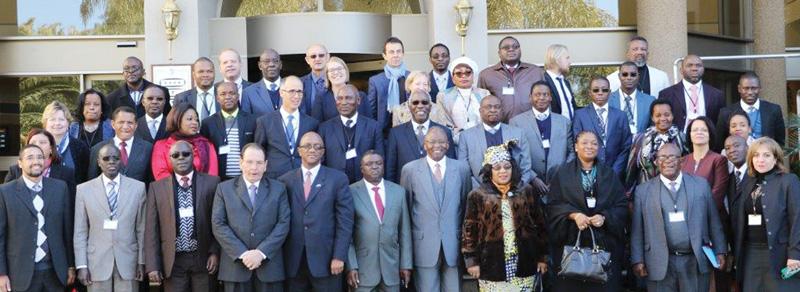
E-Governance to fight corruption
The Office of the Prime Minister (OPM) announced during the 2nd Information Communication Technology Summit in Windhoek on Tuesday that it will collaborate with Estonia to implement e-Governance in the Public Service.
First Lady, Monica Geingos and Hon. Minister of Information Communication Technology, Tjekero Tweya said at the ICT Summit at the Windhoek Country Club that the anti-corruption stance will be enforced through technology.
The First Lady during the summit said, “Imagine a tender which is advertised online and applications are submitted and evaluated by an algorithm built to assess tender applications and thereby removing the human interface.”
Overall United Nations e-Governance readiness score for Namibia currently stands at 2.2 out of a possible 4 points, grading the country as average.
The rating aggregated various categories that include policy, access, content, capability and political willingness.
E-governance aims to bring services closer to people as a number of services will be digitally processed such as new births. The Office of the Prime Minister announced that it will be working with Estonia to make this a reality.
Estonia boasts some of the world best e-Governance systems according to the e-Government Strategic Plan for the Public service that was adopted in April last year.
The area of collaboration will be on e-Government Interoperability Framework (eGIF) according to the strategic plan published by the Office of the Prime Minister ending in 2018, which is intended to reduce problems arising from clashing content of different computer systems across government and State Owned Enterprises.
This includes the management, enforcement and organising structures to assist with the adoption and updating of governments’ ability to work the system.
This will include the re-designing and finalising of the website standardisation and navigation before approval and adoption by other government offices and agencies. A standardised operation procedure manuals will also be created for these government offices and agencies. While involvement of external agencies and consideration of the latest standards applicable will also be included.
Furthermore, objectively verifying the indicators which will be used to assess and measure progress in adhering to the ability of the e-Governance system.
The Office of the Prime Minister will run 15 separate programmes with 119 projects focusing on the measurement and evaluation of the expected goals. The overall goal is of a modern government portal and ICT infrastructure that is reliable, an e-gov help desk for clients and the electronic registration of new born babies.
According to the OPM, procurement guidelines for all purchasing agreements will also be introduced. Such as the introduction of the Integrated Financial Management System (IFMS) by the Ministry of Finance which is aimed at managing spending and payments brought about improved service delivery timely and accurately.
“Through IFMS, financial reports are easily accessible and overspending by Ministries are something of the past. It integrates all sub –systems together and allows proper segregation of duties,” said Tweya.
According to the strategic plan for e-Governance, there is no procurement guidelines drafted keeping e-government requirements in view, guidelines are proposed for all aspects of procurement of goods and/or services including for evaluation of bids.
Findings revealed that e-Governance implementation has fallen short as e-government laws are in different stages of development, and still need to be approved by cabinet. Another deficit is the institutional arrangement for e-Governance where a more holistic treatment is required.
Over the next 18 months Tweya promised that 100% coverage of ICT services will be available nationwide. “By doing so, the achievement of this milestone will produce inclusive positive results in enhanced education, information sharing and entertainment for consumers,” he added.














































